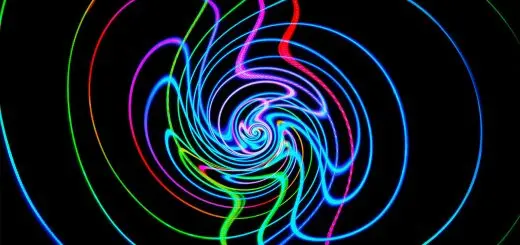The Kava Ceremony: Traditional Rituals in Polynesia

Looking for more amazing products? Check out our online store and explore our collection here! Happy shopping!
Before diving in, please note: This post is for informational purposes only. If you’d like to know more about how we approach topics, feel free to check out our friendly Disclaimer Page.
Hey there, amazing readers! 
We’re committed to delivering quality posts, and your support (even just sticking around despite the ads) means everything to us. So, bear with us, and thanks for helping us keep the good vibes rolling. Now, on to the fun stuff!
TRANSLATE BUTTON AT THE END OF THE ARTICLE
Overview: The Kava Ceremony in Polynesia
The Kava ceremony is a traditional ritual that holds a significant place in the Polynesian culture.
This sacred ceremony involves the preparation and consumption of Kava, a beverage made from the roots of the Piper methysticum plant.
Throughout Polynesia, including countries like Fiji, Tonga, and Samoa, the Kava ceremony is considered a cornerstone of social, cultural, and spiritual gatherings.
It serves as a means to foster community bonds, honor ancestors, and promote a sense of unity among participants.
In this article, we will explore the origins, significance, customs, and effects of the Kava ceremony, as well as the challenges faced in preserving this ancient tradition.
Origins and Significance of the Kava Ceremony
The Kava ceremony has deep roots in Polynesian history, dating back thousands of years.
It is believed to have originated in Vanuatu, an island nation in the South Pacific, before spreading to other Polynesian regions.
The origins of the ceremony are steeped in myth and legend, with many stories highlighting the divine origins of Kava and its connection to the gods.
The significance of the Kava ceremony lies in its role as a communal ritual.
It acts as a symbol of unity, respect, and hospitality among Polynesian communities.
The ceremony is often conducted by village chiefs or elders, who play a crucial role in maintaining social order and upholding traditional values.
By participating in the ceremony, individuals express their respect for their ancestors, their community, and their culture.
The Role of Kava in Polynesian Culture
Kava, the beverage used in the ceremony, holds a prominent place in Polynesian culture.
It is considered a sacred plant and is widely revered for its calming and sedative properties.
Kava is known for its ability to induce a sense of relaxation, relieve anxiety, and promote social bonding.
It is often consumed during important social events, such as weddings, funerals, and religious ceremonies.
In addition to its social significance, Kava also plays a role in traditional medicine.
In Polynesian cultures, it is believed to have healing properties, aiding in the treatment of various ailments, including insomnia, stress, and muscle pain.
The consumption of Kava is seen not only as a source of pleasure but also as a way to promote physical and mental well-being.
Preparation: Gathering and Processing Kava
The preparation of Kava involves a series of rituals and processes that highlight its cultural significance.
The first step in the preparation is the gathering of Kava roots.
These roots are typically harvested by men and require great care and respect.
The roots are then washed, peeled, and pounded to extract the active compounds.
Once the roots have been processed, they are mixed with water in a large wooden bowl known as a Tanoa.
The bowl is often intricately carved, symbolizing the importance of the ceremony.
The mixture is then strained through a cloth, resulting in a thick, muddy liquid, ready for consumption.
The Kava Bowl: Symbolism and Importance
The Kava bowl, or Tanoa, holds great symbolism and importance in the Kava ceremony.
It represents unity, respect, and inclusivity within the community.
The size and design of the bowl can vary, with larger bowls often used during significant ceremonies.
The carvings on the bowl may depict traditional motifs, ancestral figures, or cultural symbols, further emphasizing its cultural significance.
The act of sharing Kava from the communal bowl signifies the unity and equality among participants.
It is a symbol of hospitality, as each person is served in turn, regardless of their social status or background.
The bowl serves as a focal point during the ceremony, drawing attention to the significance of the ritual and the communal bonds it fosters.
The Kava Ceremony: Rituals and Etiquette
The Kava ceremony follows a set of rituals and etiquette that is observed throughout Polynesia.
The ceremony typically begins with a traditional welcoming speech, known as a Sevusevu.
This speech acknowledges the presence of the guests and expresses gratitude for their participation.
After the Sevusevu, the Kava ceremony proper begins.
The person leading the ceremony, often a chief or elder, prepares the Kava by mixing the powdered roots with water in the Tanoa.
The mixture is then strained and served in coconut shells or small bowls known as Bilo.
When accepting a bowl of Kava, it is customary to clap once, known as a Taki, before receiving the bowl.
This gesture is a sign of respect and gratitude.
The bowl is then consumed in one gulp, followed by another clap to signify the completion of the drink.
The ceremony continues with participants taking turns in receiving and consuming Kava until everyone has been served.
Kava Drinking: Traditional Customs and Traditions
The act of drinking Kava in Polynesian cultures is accompanied by a set of customs and traditions that have been passed down through generations.
One such tradition is the concept of "taki mada," which translates to "drink all." It is considered respectful to consume the entire contents of the bowl in one gulp, to show appreciation for the hospitality extended by the host.
During the Kava ceremony, participants are expected to maintain a respectful and modest demeanor.
Loud talking, laughing, or engaging in inappropriate behavior is discouraged.
The ceremony is seen as a solemn and sacred occasion, requiring participants to show reverence and respect.
Additionally, there are specific protocols surrounding the seating arrangement during the ceremony.
Chiefs or elders are often given seats of honor, while guests are seated according to their status within the community.
Following these customs ensures that the Kava ceremony maintains its traditional integrity and cultural significance.
The Effects of Kava Consumption on Participants
Kava consumption has a range of effects on participants, both physical and psychological.
The active compounds in Kava, known as kavalactones, have sedative and anxiolytic properties, resulting in a calming and relaxing effect.
Participants may experience a sense of euphoria, heightened sociability, and a reduction in stress and anxiety.
It is important to note that the effects of Kava can vary depending on the dosage and individual tolerance.
While moderate consumption is generally well-tolerated, excessive consumption of Kava can lead to sedation, muscle weakness, and impaired coordination.
As with any substance, responsible consumption and moderation are key to ensuring a safe and enjoyable experience.
Kava as a Spiritual and Healing Beverage
In addition to its social and recreational aspects, Kava is also revered as a spiritual and healing beverage in Polynesian cultures.
The act of consuming Kava is seen as a way to connect with the divine and seek guidance from ancestors or deities.
It is believed that Kava has the power to bring individuals closer to the spiritual realm and facilitate communication with higher powers.
Furthermore, Kava is often used in traditional medicine to treat a variety of ailments.
Its sedative properties make it an effective remedy for insomnia, stress, and anxiety.
It is also believed to have analgesic and muscle relaxant qualities, making it useful in treating conditions such as muscle pain and tension.
Contemporary Adaptations of the Kava Ceremony
In recent years, the Kava ceremony has undergone some adaptations to accommodate modern lifestyles and changing social dynamics.
While the core rituals and traditions remain intact, some communities have incorporated new elements into the ceremony to appeal to younger generations.
This includes the use of modern music, dance, and even technology to enhance the overall experience.
Additionally, the Kava ceremony has gained popularity outside of Polynesia, with Kava bars and lounges opening up in various countries.
These establishments offer a more casual and relaxed environment for individuals to experience the Kava ceremony, often mixing traditional practices with contemporary aesthetics.
Challenges to the Preservation of Kava Rituals
Despite its cultural significance, the preservation of the Kava ceremony faces several challenges in the modern world.
One such challenge is the impact of globalization and Western influences on traditional practices.
The younger generations are often more exposed to Western lifestyles and may not fully appreciate or understand the importance of the Kava ceremony, leading to a decline in participation.
Another challenge is the potential overexploitation of Kava plants.
As demand for Kava increases, there is a risk of unsustainable harvesting practices, which could deplete the plant population and disrupt the delicate ecosystem.
Efforts are being made to promote sustainable cultivation and harvesting methods to ensure the long-term availability of Kava for future generations.
Conclusion: The Enduring Legacy of the Kava Ceremony
The Kava ceremony holds a significant place in Polynesian culture, serving as a means to foster community bonds, honor ancestors, and promote spiritual and physical well-being.
Its origins and rituals date back thousands of years, and its enduring legacy continues to shape the cultural identity of Polynesian communities.
While the Kava ceremony faces challenges in the modern world, its significance and cultural value cannot be underestimated.
Efforts to preserve and adapt the ceremony to contemporary times ensure that this ancient tradition continues to thrive and evolve, passing on its rich heritage to future generations.
As we appreciate the beauty and depth of the Kava ceremony, we also recognize the importance of respecting and preserving the cultural traditions that connect us to our past and shape our collective identity.

The Enlightenment Journey is a remarkable collection of writings authored by a distinguished group of experts in the fields of spirituality, new age, and esoteric knowledge.
This anthology features a diverse assembly of well-experienced authors who bring their profound insights and credible perspectives to the forefront.
Each contributor possesses a wealth of knowledge and wisdom, making them authorities in their respective domains.
Together, they offer readers a transformative journey into the realms of spiritual growth, self-discovery, and esoteric enlightenment.
The Enlightenment Journey is a testament to the collective expertise of these luminaries, providing readers with a rich tapestry of ideas and information to illuminate their spiritual path.
Our Diverse Expertise
While our primary focus is on spirituality and esotericism, we are equally passionate about exploring a wide range of other topics and niches 

To ensure we provide the most accurate and valuable insights, we collaborate with trusted experts in their respective domains 
Our blog originally focused on spirituality and metaphysics, but we’ve since expanded to cover a wide range of niches. Don’t worry—we continue to publish a lot of articles on spirituality! Frequently visit our blog to explore our diverse content and stay tuned for more insightful reads.
Hey there, amazing reader! 
Check out our store here and take a peek at some of our featured products below! Thanks for being awesome!












